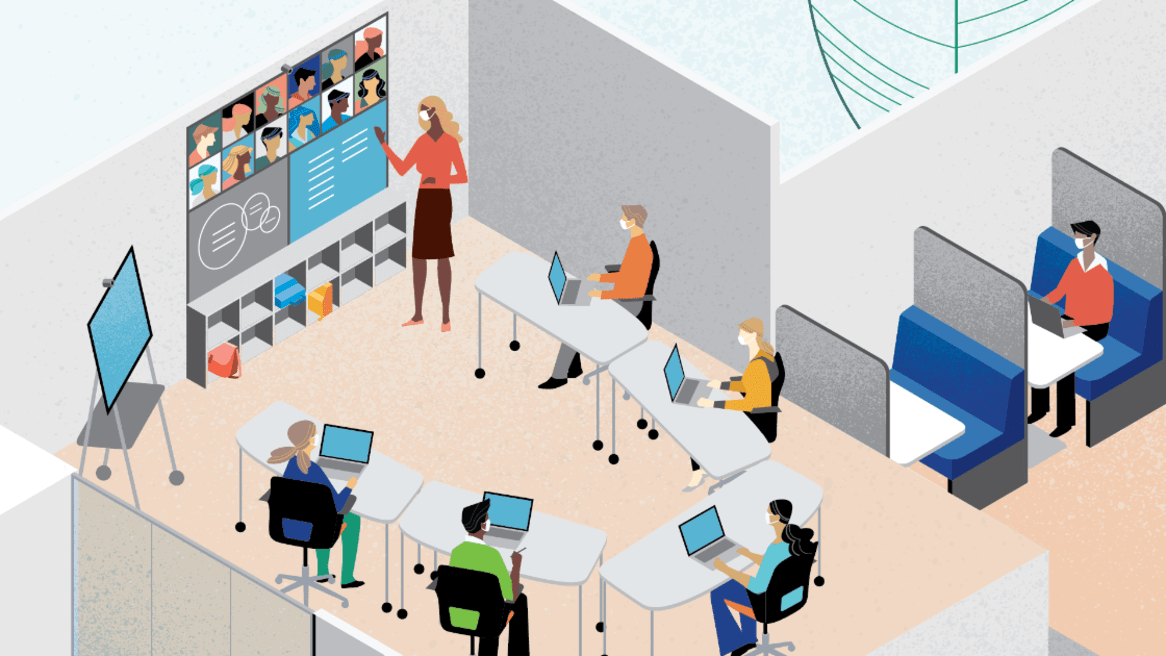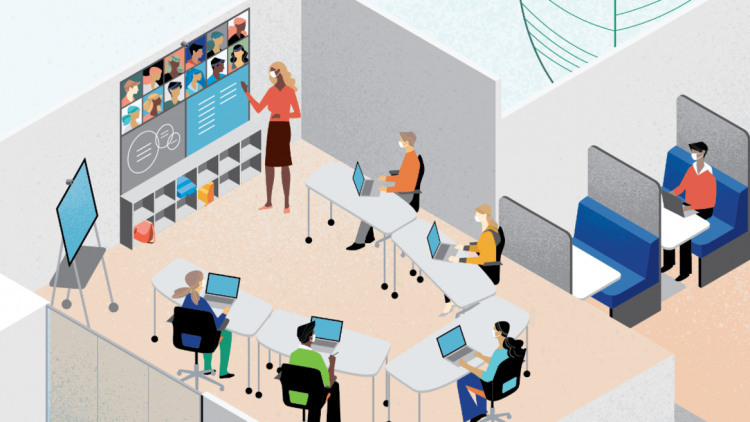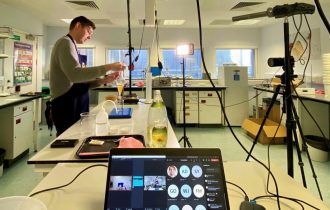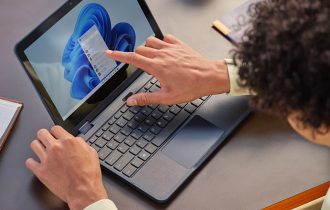The Rise of Hybrid Learning in the Post-Pandemic Era

The COVID-19 pandemic has disrupted education worldwide, forcing educators and students to rapidly adapt to remote learning. While this shift was initially driven by necessity, it has also highlighted the potential of hybrid learning – a combination of in-person and online instruction. As we emerge from the pandemic, hybrid learning is poised to reshape education in profound ways. This article explores the rise of hybrid learning, its integration of existing technologies, and provides real-world examples of its implementation.
I. Harnessing the Power of Technology: The Digital Transformation of Education
Technology has played a pivotal role in facilitating the transition to hybrid learning and continues to drive its expansion in the post-pandemic era.
1. Virtual Learning Environments: Blending the Physical and Digital
Virtual learning environments (VLEs) serve as the backbone of hybrid learning, providing a seamless integration of in-person and online instruction. Learning management systems like Canvas and Moodle enable educators to deliver course content, communicate with students, and facilitate collaborative activities. These platforms create a cohesive learning experience, combining face-to-face interactions with digital resources and tools. As former United States Secretary of Education Arne Duncan once stated, “Technology will never replace great teachers, but technology in the hands of great teachers is transformational.”
2. Synchronous and Asynchronous Learning: Flexibility and Personalization
Hybrid learning embraces both synchronous and asynchronous learning methods, allowing students to engage with course materials at their own pace while also participating in real-time interactions. Synchronous learning involves live virtual sessions, enabling students to interact with their peers and instructors in real-time. Asynchronous learning, on the other hand, involves accessing pre-recorded lectures, discussion boards, and self-paced assignments. This combination offers flexibility and personalization, accommodating diverse learning styles and schedules. As education advocate Sir Ken Robinson once remarked, “The role of a creative leader is not to have all the ideas; it’s to create a culture where everyone can have ideas and feel that they’re valued.”
II. Enriching the Learning Experience: Augmented Reality and Simulations
Hybrid learning leverages emerging technologies to enhance the learning experience, bringing subjects to life in ways that were previously unimaginable.
1. Augmented Reality (AR): Bridging the Gap between Virtual and Real
Augmented reality overlays digital information onto the real-world environment, creating interactive and immersive learning experiences. AR applications allow students to visualize complex concepts, explore historical sites, and interact with virtual objects. For example, the Smithsonian Institution uses AR technology to provide virtual tours of museums, enriching the learning experience for students who may not have the opportunity to visit in person. As Steve Jobs once said, “Technology is nothing. What’s important is that you have a faith in people, that they’re basically good and smart, and if you give them tools, they’ll do wonderful things with them.”
2. Simulations and Virtual Laboratories: Hands-on Learning in a Digital Space
Simulations and virtual laboratories replicate real-world scenarios, allowing students to engage in practical, hands-on learning experiences. These digital tools provide a safe and cost-effective way to experiment and explore various fields, such as chemistry, physics, and healthcare. For instance, medical students can practice surgical procedures in virtual operating rooms, gaining valuable skills before entering a clinical setting. As renowned educator John Dewey once stated, “Education is not preparation for life; education is life itself.”
III. Supporting Collaboration and Community Building: Social Learning in a Hybrid Environment
Hybrid learning fosters collaboration and community building, emphasizing the importance of social interaction in the learning process.
1. Virtual Collaboration Tools: Connecting Learners and Facilitating Group Work
Virtual collaboration tools, such as video conferencing platforms and shared document editors, enable students to collaborate remotely, breaking down geographical barriers. These tools promote teamwork, communication, and the development of essential 21st-century skills. An example of such a platform is Google Workspace, which provides a suite of productivity tools designed for collaborative work. As American writer Margaret Mead once said, “Never doubt that a small group of thoughtful, committed citizens can change the world; indeed, it’s the only thing that ever has.”
2. Community Engagement and Networking: Expanding Learning Beyond the Classroom
Hybrid learning extends learning beyond the physical classroom, creating opportunities for community engagement and networking. Online forums, social media groups, and virtual networking events allow students to connect with professionals, peers, and mentors from diverse backgrounds. These interactions facilitate knowledge sharing, career exploration, and the cultivation of a broader support network. As former First Lady Michelle Obama once emphasized, “You may not always have a comfortable life; you will not always be able to solve all the world’s problems at once, but don’t ever underestimate the importance you can have because history has shown us that courage can be contagious, and hope can take on a life of its own.”
Conclusion
Hybrid learning represents the future of education, blending the best aspects of in-person and online instruction. By harnessing the power of technology, enriching the learning experience through augmented reality and simulations, and fostering collaboration and community building, hybrid learning opens new doors for accessible, engaging, and personalized education. As we navigate the post-pandemic era, embracing hybrid learning will undoubtedly revolutionize education and empower learners to thrive in an ever-changing world. To quote Nelson Mandela, “Education is the most powerful weapon which you can use to change the world.” And hybrid learning is the catalyst that propels us toward that change.


